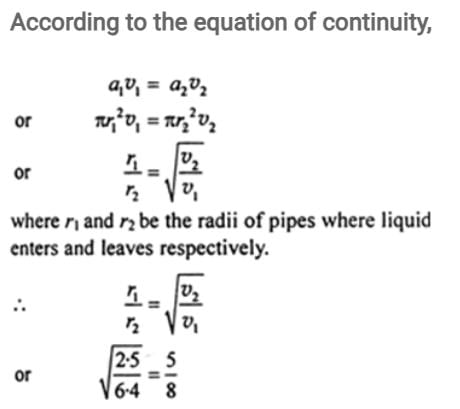Test: Equation of Continuity - JEE MCQ
10 Questions MCQ Test - Test: Equation of Continuity
Blood is flowing at the rate of 200 cm3/s in a capillary of cross-section area 0.5 m2. The velocity of flow is mm/s is
Flow of water in hilly area is an example of streamline flow.
A straight or curved path, such that tangent to it at any point gives the direction of flow of liquid at that point is known as
The flow of liquid in which its layer slides over another without mixing, is called
Fire fighters have a jet attached to the head of their water pipes. This is done to
A non-viscous liquid flows through a hose. Liquid enters with velocity 6.4 m/s and leaves with velocity 2.5 m/s. What is the ratio of radii of the hose where the liquid enters and where it leaves?
The equation of continuity is a special case of the law of conservation of
In case of streamlined flow of liquid, the loss of energy is
A garden sprinkler has 150 small holes, each of 2 mm2 area. If water is supplied at the rate of 0.3 litres/s, then find the average velocity of the spray.




















